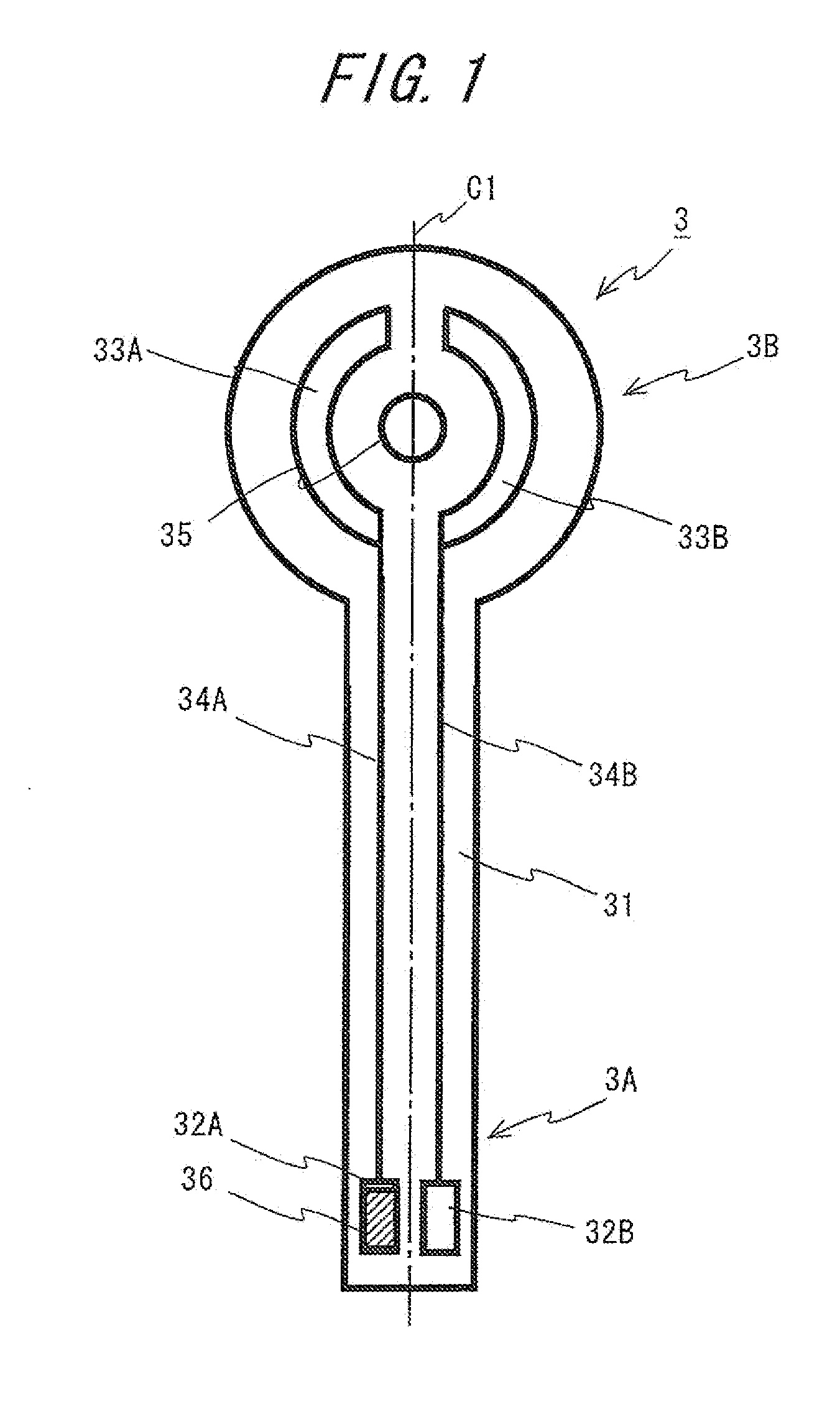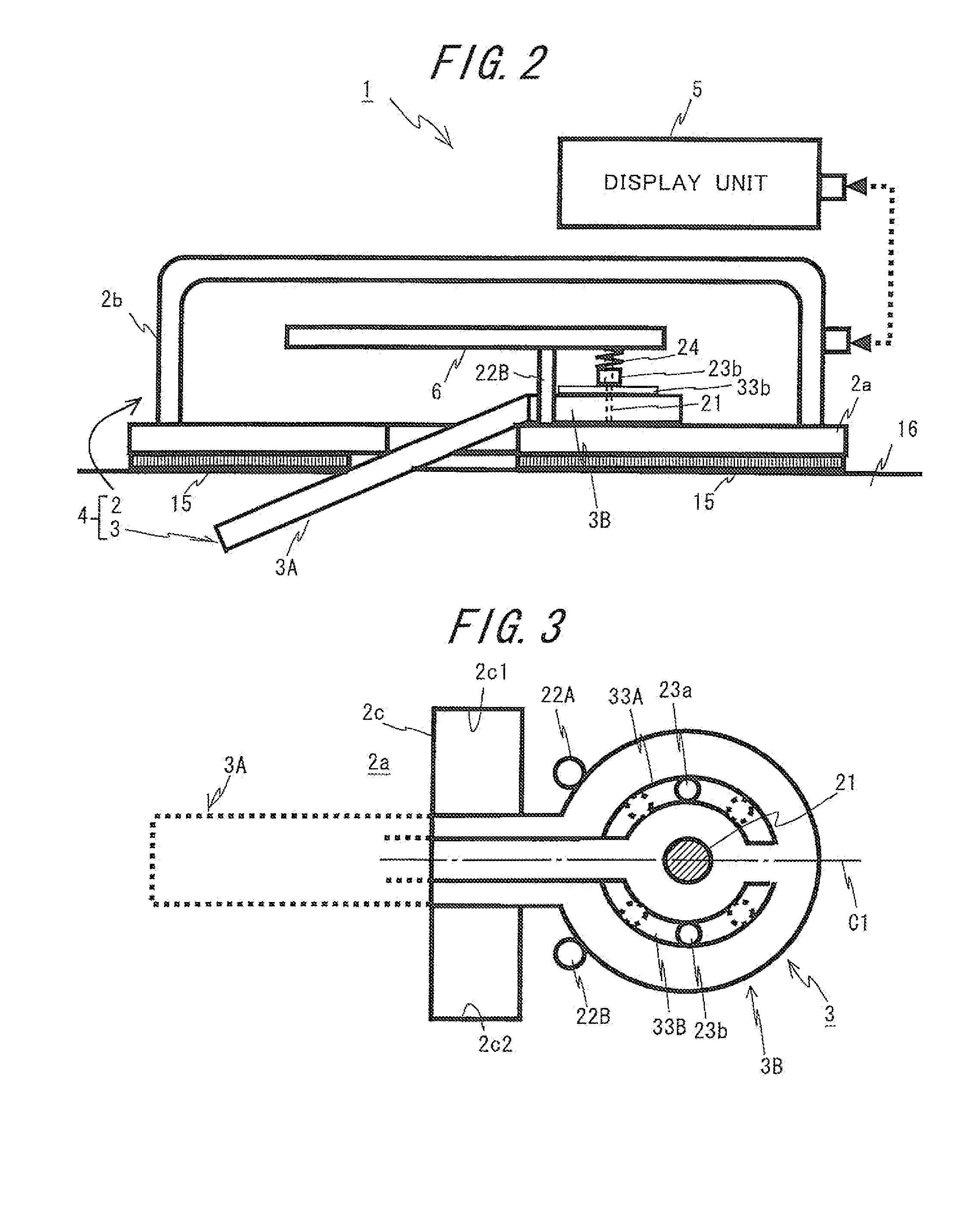Electrochemical sensor
a biosensor and electrode technology, applied in the field of electrochemical sensors, can solve the problems of affecting the electrical connection between the contact pad and the terminal, the preferable state of the electric connection might be lost, and the conventional technology is not structured to absorb the external force applied to the one end portion of the biosensor, etc., to achieve the effect of keeping the preferable state of the electric connection
- Summary
- Abstract
- Description
- Claims
- Application Information
AI Technical Summary
Benefits of technology
Problems solved by technology
Method used
Image
Examples
first embodiment
[0064]FIG. 1 is a view showing an example of a configuration of an electrochemical sensor according to a first embodiment of the present invention. FIG. 2 is a view illustrating an RT-CGM apparatus, to which the electrochemical sensor illustrated in FIG. 1 is applied, including a monitoring apparatus and a display unit. FIG. 3 schematically shows a state where the electrochemical sensor attached to the monitoring instrument is viewed in plane from above.
[0065]An RT-CGM apparatus (which will hereinafter be simply termed a monitoring apparatus) 1 shown in FIG. 2 is used for automatically continuously monitoring (measuring), as a physical quantity of a specified ground substance in a body fluid, a glucose concentration in an interstitial liquid of a human being and an animal (which are generically referred to as an examinee). The monitoring apparatus 1 includes a sensor unit 4 including a monitoring instrument 2 and an electrochemical sensor 3, and a display unit 5 serving as a data re...
second embodiment
[0117]Next, a second embodiment of the present invention will be discussed. The second embodiment embraces the points that are common to the first embodiment, and therefore the discussion will focus on different points in a way that omits the descriptions of the common points. Further, in the configurations of the glucose sensor and the monitoring instrument according to the second embodiment, the same components as those in the first embodiment are marked with the same numerals and symbols.
[0118]FIG. 7 is a view illustrating an example of a configuration of an electrochemical sensor (a glucose sensor 3c) according to the second embodiment. FIG. 8 schematically illustrates a state in which the glucose sensor 3c attached to the monitoring instrument is viewed in plane from above.
[0119]As illustrated in FIG. 7, the glucose sensor 3c according to the second embodiment is different from the glucose sensor 3 according to the first embodiment in terms of having a notched portion 71 as a s...
third embodiment
[0123]Next, a third embodiment of the present invention will be discussed. The third embodiment embraces the points that are common to the first embodiment, and therefore the discussion will focus on different points in a way that omits the descriptions of the common points. Further, in the configurations of the glucose sensor and the monitoring instrument according to the third embodiment, the same components as those in the first embodiment are marked with the same numerals and symbols.
[0124]FIG. 9 schematically illustrates a state in which the electrochemical sensor (a glucose sensor 3d) according to the third embodiment is attached to the monitoring instrument 2. FIG. 10 schematically, shows a state where the glucose sensor 3d attached to the monitoring instrument 2 is viewed in plane from above.
[0125]As depicted in FIGS. 9 and 10, the glucose sensor 3d according to the third embodiment has a recessed portion 81a and a recessed portion 81b in place of the through-hole 35 formed ...
PUM
 Login to View More
Login to View More Abstract
Description
Claims
Application Information
 Login to View More
Login to View More - R&D
- Intellectual Property
- Life Sciences
- Materials
- Tech Scout
- Unparalleled Data Quality
- Higher Quality Content
- 60% Fewer Hallucinations
Browse by: Latest US Patents, China's latest patents, Technical Efficacy Thesaurus, Application Domain, Technology Topic, Popular Technical Reports.
© 2025 PatSnap. All rights reserved.Legal|Privacy policy|Modern Slavery Act Transparency Statement|Sitemap|About US| Contact US: help@patsnap.com



